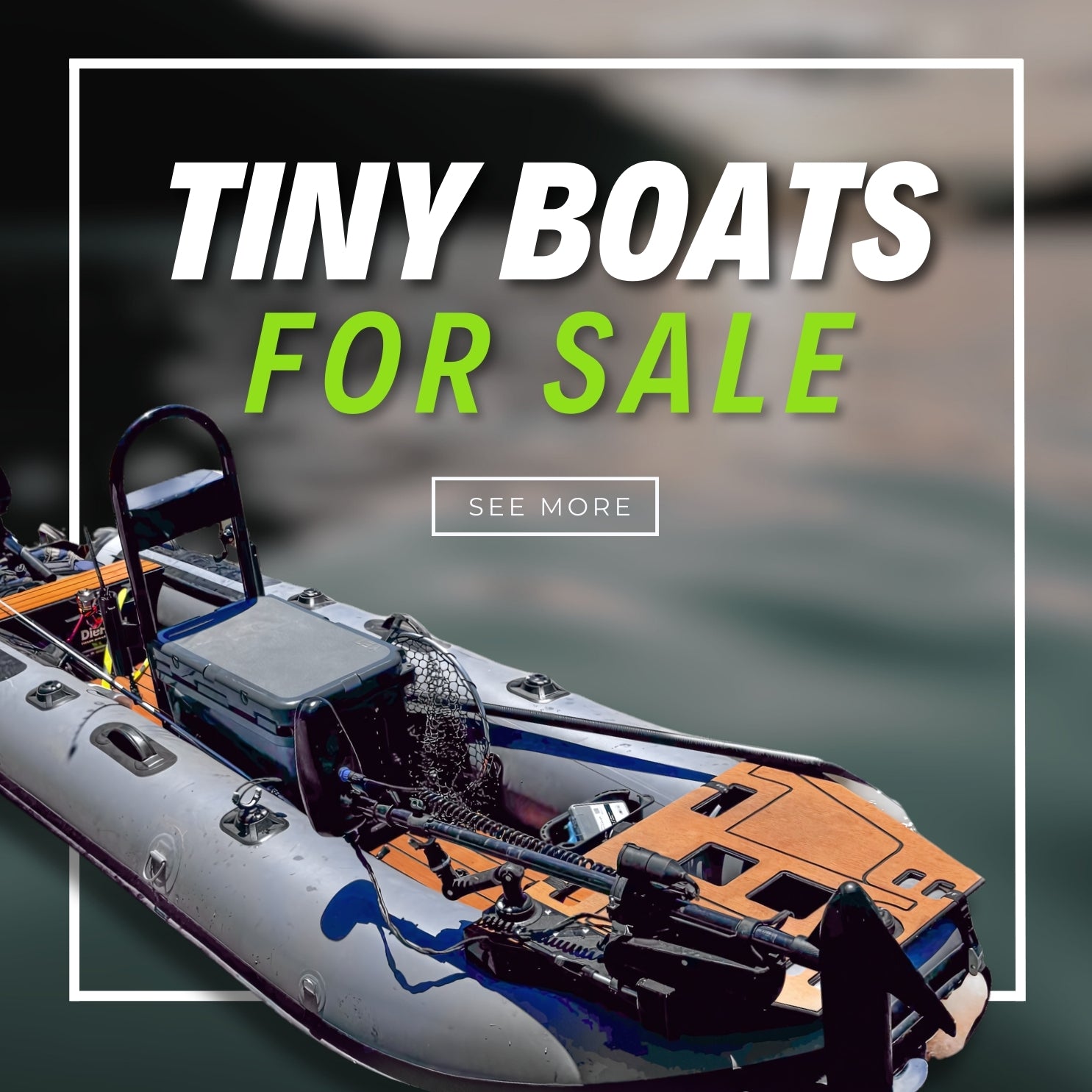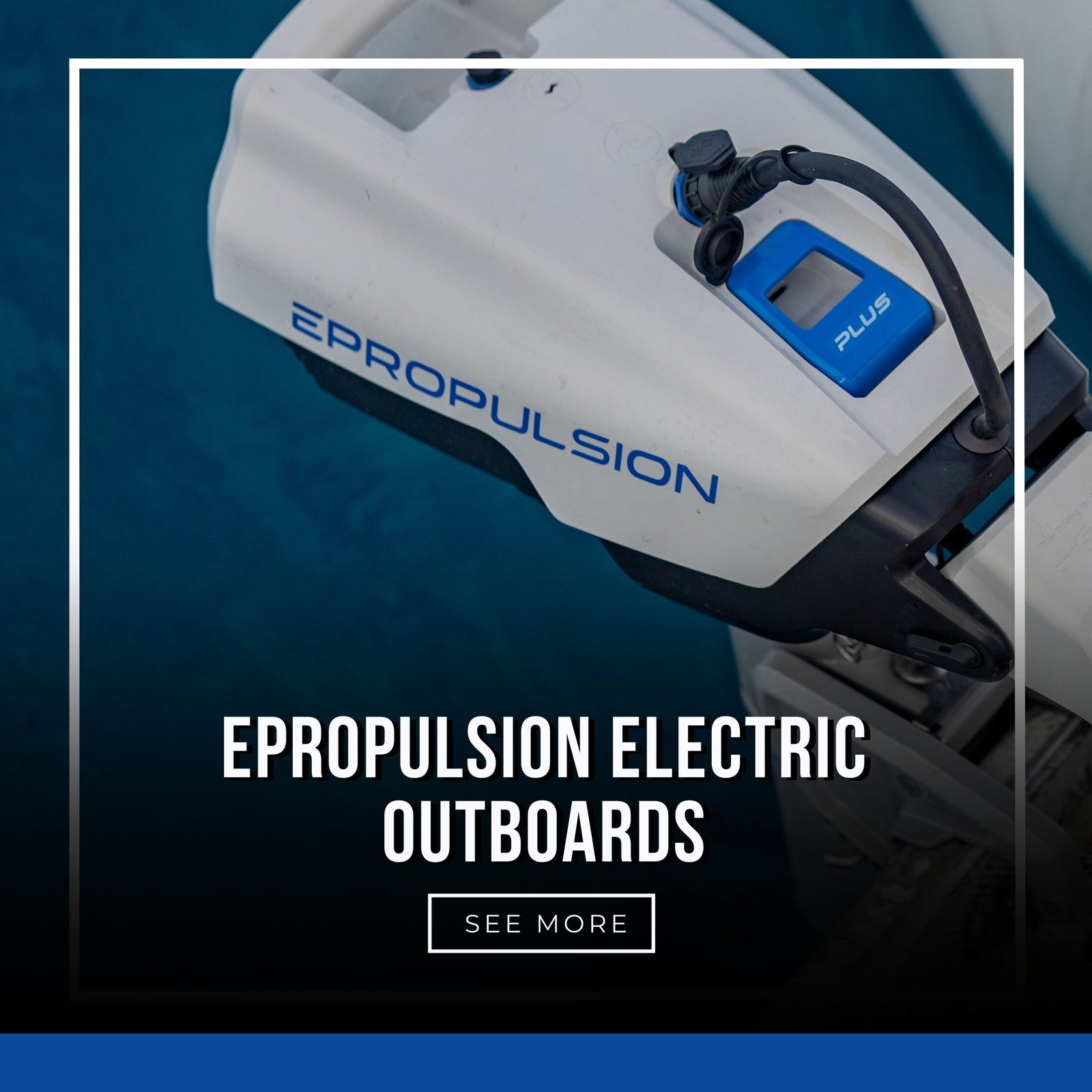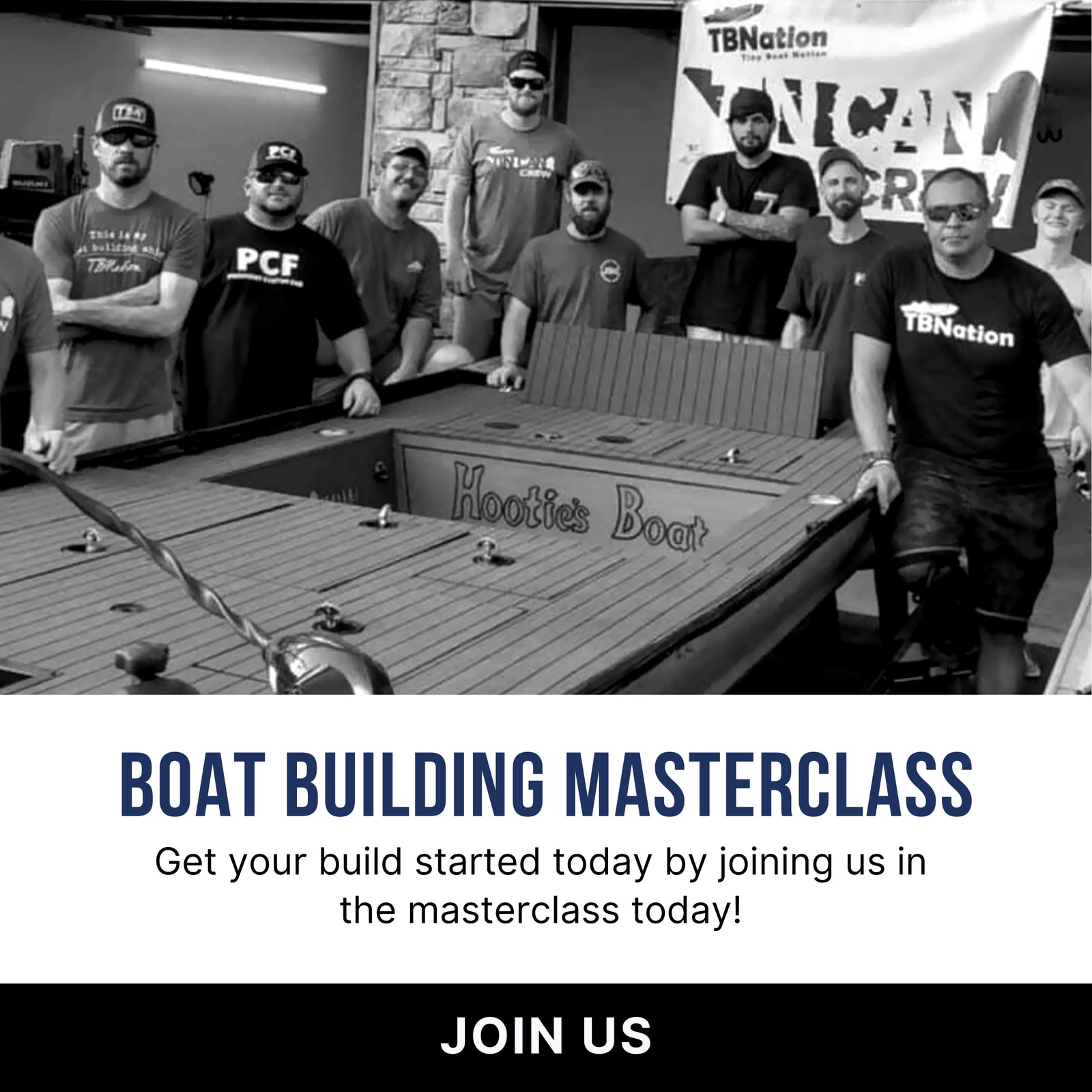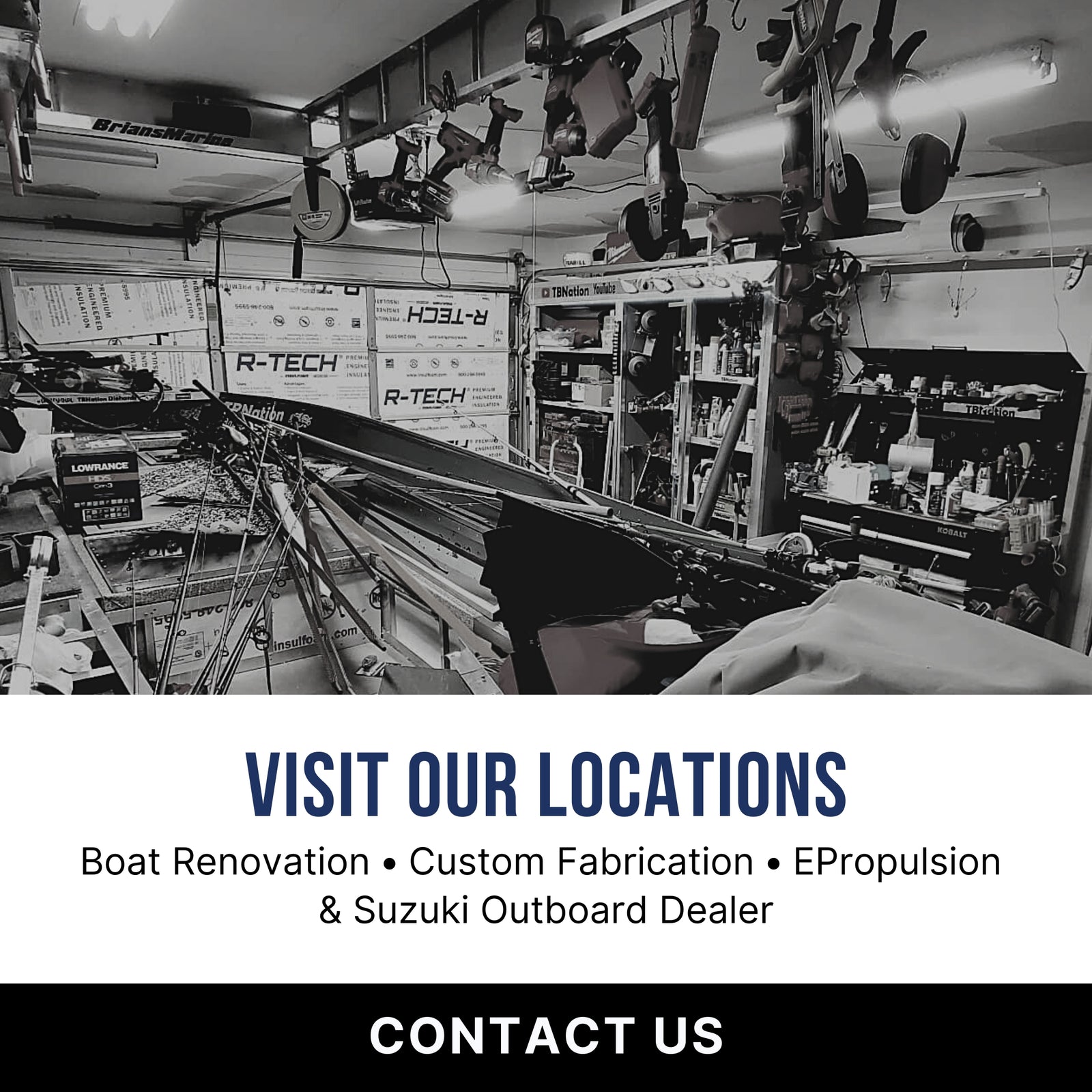Your Cart is Empty

Pond Prowler 8 'Monster' Conversion: A Comprehensive Guide
The Tiny Boat Nation team transforms a Pond Prowler into a powerful "monster" plastic bass boat. This project provides step-by-step instructions for both DIY enthusiasts and fishing fans on how to change a simple plastic boat into a customized fishing machine. In this article, we'll go over the full process, from early planning and material selection to finishing touches and water testing, providing tips, observations, and comments along the way.
Project Planning and Strategy
Initial Design Considerations
Before any actual labor begins, the most important stage in any DIY project is rigorous planning. The primary goal of this upgrade was to improve the usefulness of the Pond Prowler while maintaining its stability and safety on the water. The team had to verify that each addition, from the deck arrangement to the storage compartments, was both functional and long-lasting.
The design phase included drawing out potential layouts and determining the optimum use of space. It was critical to provide for appropriate storage, comfortable sitting, and convenient access to necessary tools and equipment. The idea was to increase the boat's functionality while keeping it lightweight and agile.
Material Selection
Selecting the appropriate materials is important to the success of any conversion project. For this Pond Prowler 8 conversion, the team used a lightweight aluminum structure to keep the boat manageable while providing the necessary support for the deck and other components. The decking is made of high-quality EVA foam, which provides comfort and durability. The team also opted for resin coats to prevent the wood components from water damage, ensuring longevity.
Budget Planning
Boat conversion can be costly; therefore, budget planning was required. The team started by calculating the expected costs of tools, materials, and other components, including the fish detector and trolling motors. Setting a clear and defined budget from the start allowed them to manage costs and make informed decisions about where to save and where to spend.
Building the Deck Layout

Creating the Deck Frame
The deck frame serves as the foundation for the whole conversion project. It needed to be strong enough to handle both the fisherman and any additional tools but also lightweight enough to keep the boat maneuverable. The team began by measuring and cutting the aluminum framing before assembling it to form a firm foundation for the decking.
Cutting and Installing Drop-In Lids
The installation of drop-in lids for the storage compartments was a major feature of the modification. These lids have to be precisely crafted in order to be both useful and convenient. To guarantee a precise fit, the team carefully measured and cut the openings. Once installed, the lids were set on tracks, enabling smooth and easy sliding access.
Deck Leveling Techniques
Creating a level deck was critical for maintaining stability and preventing water from pooling in low or undesired areas. To obtain a precisely level deck, the team employed a variety of methods, including shimming and fine-tuning the frame. This procedure was critical in improving the boat's operation and increasing onboard comfort.
Advanced Modifications
Creating Dry Storage Compartments
For any dedicated fisherman, dry storage is important. The team's primary objective was to create large, well-sealed compartments designed to protect gear from moisture, even in harsh weather. These storage spaces were smoothly integrated into the deck, and unique drop-in lids provided convenient access while effectively keeping water out.
Resin Coating the Deck for Durability
To protect the deck's hardwood components, the team used a resin covering. This not only created a watertight barrier, but it also gave additional wear and tear protection. The end product was a strong, long-lasting deck that could resist the rigors of regular use.
Applying EVA Foam Boat Decking (Orthodek)
For the finishing touch, the team installed EVA foam boat decking, known as Orthodeck. This material is both comfortable underfoot and resistant to the elements, making it ideal for a fishing boat. The foam was applied in large sheets, then trimmed and routed for a clean, professional look.
Installation of Additional Features
Subfloor Installation
The team installed a subfloor underneath the main deck to improve the boat's stability and longevity. This subfloor improved overall performance by adding another layer of protection and assisting in the more even distribution of weight throughout the boat.
Fabricating End Caps
The end caps are an important addition, not only for aesthetic appeal but also for protection as well. They were custom-made to fit the boat perfectly, giving a snug and secure finish. Besides adding to the boat’s overall appearance, they helped keep water out, making the whole structure more watertight and reliable.
Installing the 'Troll & Find' Fish Finder Mount
Finding the right spot is the main goal of fishing, and a fish finder is a necessary tool for this task. The team installed a special, versatile, and stable fish finder mount. With this mount, the fish finder may be securely fastened during travel and positioned for the best view.
Installing the Humminbird Piranha Fish Finder
The team mounted the Humminbird Piranha Fish Finder after securing the mount. By providing real-time data on underwater conditions, this device makes it easy for fishermen to find and track fish. The team carefully routed the connections and secured the gadget for a neat, polished finish, making the installation process straightforward.
Testing and Evaluation

Testing the Pond Prowler in Northern Arizona
Now that the modification was finished, it was time to test the Pond Prowler in practical settings. In order to test the boat, the team traveled to the Northern Arizona waters. During the testing phase, the boat's overall performance, maneuverability, and stability were evaluated under various conditions.
Analyzing the Project’s Successes and Challenges
The team conducted a comprehensive project analysis after the testing. They pointed out areas for improvement as well as the features that worked well, such as the sturdy deck and effective storage spaces. This viewpoint provided helpful information for anyone organizing a comparable endeavor.
Evaluating the Performance of the Trolling Motors
During the conversion, the team assessed a range of trolling motors, such as examining their power, speed, and effectiveness. In order to help readers decide which motor is ideal for their particular boats, this section of the article provides a thorough review of each motor.
Comparing the Pond Prowler with Other Boats (e.g., Yak Killer)
The team tested the Pond Prowler and contrasted it with other well-known boats, such as the Yak Killer. This comparison highlighted the positives and negatives of each boat, giving prospective buyers or do-it-yourself enthusiasts a fair evaluation.
Reviewing the Final Results
The Pond Prowler conversion produced an amazing result. The boat fared well in every test, and the modifications improved comfort and functionality. The deck arrangement and storage choices surpassed the team's expectations, leaving everyone quite satisfied.
Budget Breakdown

Detailed Cost Analysis
In this part, the team provides a thorough breakdown of the costs associated with the Pond Prowler conversion, which is an important consideration for any do-it-yourself project. Everything is meticulously itemized, from materials and tools to extra features like the fish finder. In addition to providing readers with a comprehensive understanding of the necessary financial outlay, this thorough analysis offers helpful advice for controlling and reducing expenses along the way.
Evaluating the Value for Money
The team evaluates the Pond Prowler conversion's overall value for money in addition to listing the associated expenses. They check whether the modifications justified the investments and how the finished build compares to similar boats on the market. Readers can grasp a clear understanding of this evaluation regarding the project’s cost-effectiveness and practical worth.
Final Thoughts and Lessons Learned
Reflections on the Conversion Process
The team assesses every step of the project, from initial planning to final testing, as it draws to a close. They discuss what they would do differently if they had to start over, what went well, and what challenges they faced. For anyone undergoing a similar conversion, this reflection provides helpful information.
What Could Have Been Done Better
There are obstacles in any endeavor, and the Pond Prowler conversion was no exception. The team examines areas like time management and material efficiency, where they could have done better. For do-it-yourself enthusiasts who wish to steer clear of similar blunders, these lessons learned are priceless.
Final Thoughts on the Pond Prowler Conversion
The Pond Prowler 8 "Monster" conversion was a huge success all around. The boat's performance, ease of use, and overall functionality were all much enhanced by the modifications made. The team is certain that this article will encourage and assist others in transforming and upgrading their own plastic bass boat into one-of-a-kind fishing vessels.
Join Our VIP List
Join the Tiny Boat Nation VIP Members List.
It's Free! Stay Up To Date With Announcements, Product Give Aways, News and Promotions.










